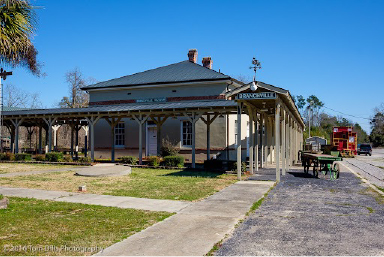Train stations have long been symbols of connection and progress, serving as hubs for commerce, travel, and community life. In South Carolina, historic train stations are architectural treasures that reflect both the industrial boom of the 19th and early 20th centuries and the social dynamics of the time.
These structures, from grand depots in major cities to small rural stations, tell stories of economic growth, technological advancement, and changing travel habits. Many were designed in styles that combined function with beauty—featuring red brick facades, arched windows, and decorative gables.
One notable example is the Charleston Union Station, built in 1907. Although it was later demolished, its grandeur set a standard for train depots across the state. Smaller stations, like the Greenville Train Depot (1905), remain as reminders of South Carolina’s role in the transportation boom.
Rural train depots played a particularly vital role. In towns like Branchville, which claims the title of the oldest railroad junction in the country, stations were lifelines for goods, mail, and passengers. Branchville’s depot is now a historic site that draws visitors interested in the legacy of railroads in South Carolina.
Efforts to preserve these structures are vital. Adaptive reuse has become a popular strategy to save historic train stations, transforming them into museums, restaurants, or event spaces. For example, though modernized, the Columbia Amtrak Station maintains historical significance as a continuation of rail travel’s legacy.
Preserving these buildings allows us to celebrate a time when train stations were the heartbeats of communities. Their architecture is a testament to South Carolina’s industrial history, while their revival offers opportunities to reconnect with the past.
For more on this topic, see:
Branchville Railroad Shrine and Museum
National Railway Historical Society
IMAGE

Branchville Railroad Shrine and Museum

